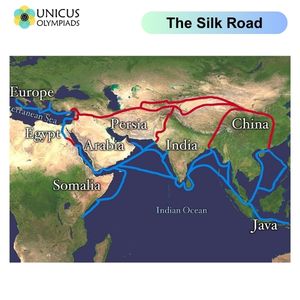

The Silk Road was an ancient network of trade routes that connected the East to the West, facilitating the exchange of goods, culture, and ideas between civilizations. Spanning across Asia, the Middle East, and parts of Europe, the Silk Road was instrumental in the development of global trade, cultural diffusion, and the spread of innovations that would shape history for centuries. In this article, we will explore the history of the Silk Road, its role in linking cultures, and the lasting impacts it had on the world.
The Silk Road was not a single road, but rather a network of interconnected trade routes that stretched from China in the East to Europe in the West, with branches extending through the Indian subcontinent, the Middle East, and Central Asia. The term "Silk Road" was coined in the 19th century by the German geographer Ferdinand von Richthofen, due to the prominence of silk trade between China and the West. The Silk Road flourished between the 2nd century BCE and the 14th century CE, during the height of several major empires, such as the Han Dynasty, the Roman Empire, and the Mongol Empire.

The Silk Road consisted of several land and maritime routes:
The land routes were particularly important for transporting valuable commodities like silk, while the sea routes helped in the exchange of goods like spices, ceramics, and textiles.
As the name suggests, the Silk Road was primarily known for the trade of silk, a luxurious fabric made from the silk of the silkworm. The Chinese held a monopoly on silk production for centuries, and the trade of silk became a symbol of wealth and status in many cultures along the route. Silk was highly sought after in places like the Roman Empire, Persia, and later, the Byzantine Empire.
While silk was the most famous product traded, the Silk Road facilitated the exchange of a wide variety of goods:
One of the most significant aspects of the Silk Road was the exchange of ideas and religions between different cultures. The trade routes facilitated not only the movement of goods but also the exchange of knowledge, beliefs, and innovations that shaped the course of history.
The Silk Road was not only a conduit for religious exchange but also for artistic and cultural influences. Artists, musicians, and intellectuals traveled along the trade routes, sharing their knowledge and creative works. This led to the fusion of different artistic styles, such as the blending of Greek and Eastern artistic traditions in Central Asia and China.
The Han Dynasty (206 BCE – 220 CE) played a key role in establishing and securing the Silk Road. Under Emperor Wu, the Han Dynasty expanded China’s borders, facilitating trade with Central Asia and the Western world. The Chinese sent silk, tea, and other products westward, while receiving goods such as horses, glass, and precious metals from the West.
The Roman Empire was one of the main consumers of Silk Road goods, particularly silk. Romans valued silk for its luxuriousness, and Roman merchants brought it into the empire in exchange for Roman glassware, wine, and olive oil. The Roman Empire’s demand for silk drove much of the trade along the route.
The Mongol Empire (13th-14th century CE), under the leadership of Genghis Khan and his successors, played a pivotal role in reviving the Silk Road after centuries of disruption. The Mongols established peace and security across vast areas of Eurasia, making it safer for merchants and travelers to use the trade routes.
The decline of the Silk Road was a gradual process that occurred over several centuries. Key factors contributing to its decline include:
Although the Silk Road eventually faded as a primary trade route, its legacy lives on. The exchange of goods, ideas, and cultures that occurred along the Silk Road shaped the world in profound ways. It facilitated the spread of technology, such as papermaking and gunpowder, and cultural and religious exchanges that have had lasting impacts on the global community.